Most people pay attention to technology and innovation as it plays out in the commercial world, but the innovation happening in the U.S. government is equally exciting to watch.
The Covid-19 pandemic will prove to be an innovation trigger, accelerating cloud adoption and remote work capabilities across all of government, promoting new ways for the public sector to interact with citizens digitally. And that's not to mention the work different parts of the government have been doing to help facilitate the development of a coronavirus vaccine. The social justice protests in early-to-mid-2020 increased the focus on inclusion and diversity in the government workplace and in the contractor and supplier communities that support it. The resulting increased awareness of diversity which will keep technology ethics front and center for citizens, government technology leaders, and government suppliers. Finally, the election of Joe Biden as president will result in sweeping changes in emphasis on particular technology policies and priorities.
As we witness this technology paradigm shift within the public sector, I anticipate four megatrends that will shape the U.S. government technology and innovation agenda.
1. Transforming To Digital
In 2021, digital transformation efforts will continue or expand into just about every government organization's activities. For example, we will see the effects of digital transformation in the area of systems engineering. As a result of the need for faster capability adoption, emerging military threats, increasingly outdated platforms, and emerging technologies, the U.S. government will increase its focus on replacing time-consuming traditional engineering processes with "digital engineering." Digital engineering focuses on the use of model-based systems engineering processes, creating shared engineering models in the cloud and leveraging tightly integrated digital engineering tools. Consequently, designers and developers obtain the ability to process changes in minutes or hours instead of weeks.
By connecting new technologies like virtual reality and additive manufacturing to digital engineering platforms, we could enable rapid virtual prototyping, resulting more quickly in tangible products as well as help in maintaining equipment. We'll also see adoption of digital twins, in which continuous real-world data is fed to a model to improve future designs as well as for predictive maintenance.
2. Reshaping Experience
Observers inside and outside of the government have long noted that citizens and government workers could have a better experience with government services. Work related to providing more services via mobile devices and natural language interfaces will be focal points in the near future, but we will begin to see additional focus on newer technologies like virtual reality/augmented reality (VR/AR).
I expect the government to expand the application of VR/AR technologies beyond the ways they are used today, such as for training people to drive or fly. For example, we are already seeing VR being used as a way to give people a more realistic and emotional experience of racism. Augmented reality will provide the government new ways to create citizen experiences of government. We could also envision an application in which a citizen could point their phone's camera at a factory and instantly see how much pollution is being emitted and whether it is in compliance with the law.
3. Multiplying Productivity
In 2021, we will see progress in the way we use AI-related technologies such as basic machine learning, robotic processing and knowledge management to improve productivity. Although we remain nowhere near human-level AI, we will see an expansion of its use in a number of specific situations.
Today, services are largely delivered by people using technology to help other people. In the future, this will flip: Most services will be delivered via machine-to-machine interaction, with people helping the AI when it doesn't know what to do. Some companies have already built entire business models around this flip. How often do you interact with an actual person at Amazon or Google, for example?
4. Expanding Frontiers
The frontiers of IT modernization efforts are literally expanding into outer space. Key technologies such as the Internet of Things, 5G networks and low earth orbiting satellites will be key to this transition from data center and cloud-based computing. Thanks to a massive shift from high to low-cost space-based satellites, the internet will be accessible from everywhere. This concept is illustrated by Defense Department programs like the Joint All-Domain Command and Control (JADC2) initiative to produce a singular network capable of linking all U.S. military sensors, across all domains, in any conflict region. In the longer term, this trend will accelerate further with the arrival of biological and quantum computing.
The U.S. government needs solutions to some of the world's most difficult and complex problems. Those problems will require solutions that result from the integration of technologies mentioned above. The U.S. government and government supplier organizations should be investing R&D in exploring the application and operationalization of these emerging technologies to address those problems.
Critical to success in adoption of these new technologies will be the need for diversity within technology communities. Government agencies and organizations that support them should be looking for ways to make significant improvements in addressing inclusion and diversity in their workforces. System architectures are designed by people. If all of the people who design them have the same backgrounds, those implicit biases will be reflected in the solutions they design, resulting in suboptimal solutions. All of these innovations I've described will require diverse development teams as well as a culture where everyone is represented on an equal footing to ensure they most effectively support government missions.
eGovt Solutions empowers governments to face public and digital service challenges head-on.
We have created a digital transformation solution that drives smart decisions, deploys new policy changes quickly, distributes information, builds trust between citizens and their government, and much more through an automated and digital-first solution with the least burden on businesses and the public sector.
Click below to learn more.
This article first appeared in Forbes, Published on February 18, 2021

